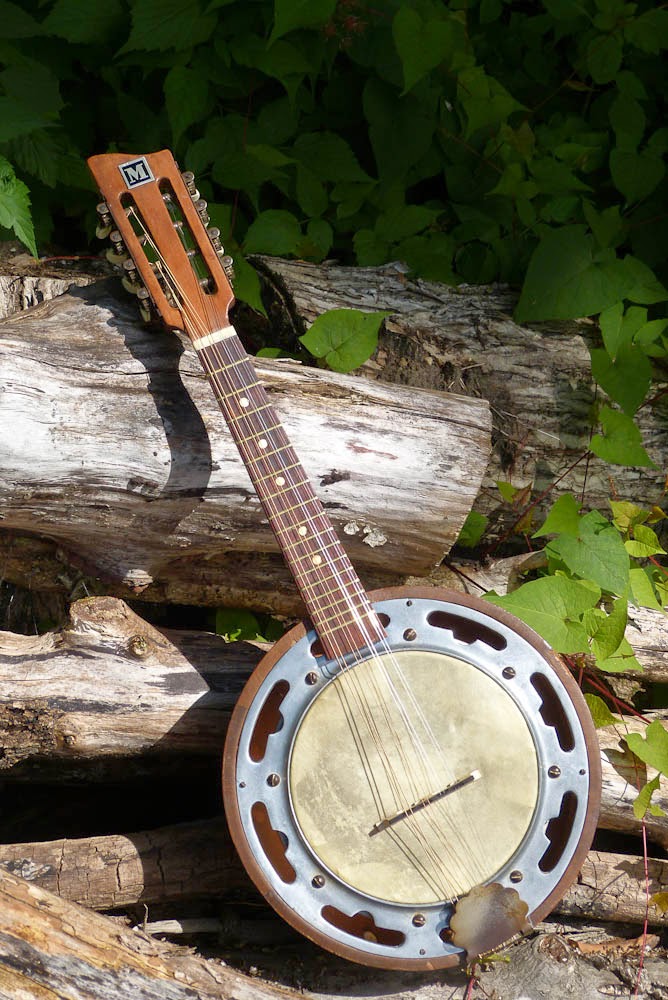c.1950 Italian-made? Banjo Mandolin
This is a customer's little rig. While it could date anywhere from 1915-1940 based on style of build the metal M plate at the headstock, finish style, and the type of zero-fret originally found at the headstock as well leads me to believe this is a postwar, early-to-mid 50s build instead. This sort of thing was built for a long time in Italy, France, and Germany.
At any rate work on it included a new nut, new bridge, fret level/dress, and a neck reset-ish procedure. Originally the neck was nailed (nailed! nailed! yes!) on and I quickly disassembled that, shimmed the neck back for better action, and installed a bolted attachment system instead. Problem solved, action adjusted... and now it's a quick, slick player that will be enjoyed both by its owner (a sometimes-picking violinist) and by its owner's daughter (a newly-minted sometimes-picking violinist).
These just have a different sound from American instruments of the same general size. The "inline" or "zither style" head design and incorporated body-resonator gives these instruments a more zingy, mids/treble, punchy tone. They're nice to have if you want to pick counterpoint or sketchy lead work and be heard in a mix.
My only gripe with the design of these is that they're not very stable over time (hence the reason I don't usually buy them for resale). I fully expect to see this back in the shop next year for tweaking as it settles in to being strung up again... which will be easy now that it's a bolted-neck operation. The reason for the instability is that there's not much neck-through-tailpiece support to keep the pot/body itself rigid except for the top edge which is aided by the cast tensioner unit.
The thick rosewood board is a nice thing to have as many of the older variants of this same design used flaky dyed boards. Bigger brass frets... smaller cream clay dots.
Mahogany is used throughout for the body.
Talk about straight grain, huh?








Comments